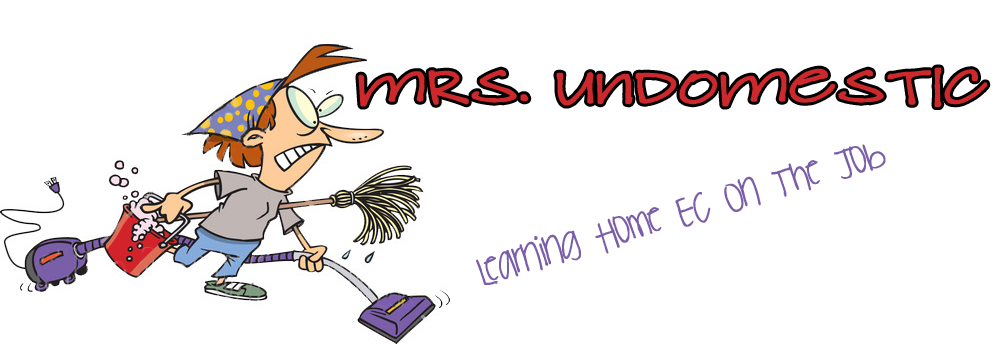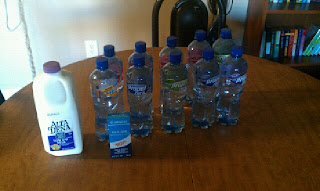Yesterday, between Albertsons and CVS, I spent $13.57 for all of the stuff above. The official rundown of stuff is:
CVS:
2 tubes of Crest Toothpaste
1 bottle of Gain Dish Soap
1 bottle Aussie Shampoo
1 bottle Aussie Deep Conditioner
1 small package M&Ms
1 package AAA batteries
Everything on the list was on sale, except the M&Ms. On top of that, I had a coupon for each item except the M&Ms. If I had simply run to the store and bought these things, it would have cost me $26.63. The sale prices took my total to: $17.90
My coupons included: a BOGO on the Aussie, a $1 off on the other Aussie (one not free), $1 off Crest (x2), $0.75 off Duracell, $1 off Gain.The Aussie BOGO, Crest and Duracell coupons all came from my regular Sunday paper. The other Aussie and Gain coupons I got from a mail in rebate I sent to P&G a few months ago.
After they subtracted coupons, my subtotal was $10.16. I used a $10 ECB I had from a previous transaction, taking my subtotal to $0.16 and my final total (everything except the M&Ms had tax) was $1.64. I also got $7.00 in ECBs for my next trip (plus have another $5 in ECBs from a previous transaction).
Albertsons:
10 Propel Fitness Waters
1 Half Gallon Milk
1 bottle Imitation Maple Extract
The water and milk were on sale, but the maple extract wasn't. I had one coupon, for the milk, from here. Original price on this would have been $22.08 but after the sale prices, my total was $17.48.
The milk coupon was for $0.55 off and because I bought 10 waters, which were part of a mix and match sale, I got another $5 off. Since everything was food, no sales tax, giving me a total of $11.93.
Now, I know that was a lot of numbers. Since I'm not a hot shot math person, I know that can seem a bit overwhelming and boring. My goal wasn't to make your eyes glaze over, but to show you how important sales and using your coupons with sales can be. The Crest, Aussie Shampoo and Gain will all be put in my stockpile of stuff to use later. But everything else is for every day, current use. But since I bought smart, it cost me a whole lot less.
Here's the great part, you can do it too. In fact, if you wanted to (and lived in SoCal) you could completely replicate my Albertsons purchase today without needing to buy a newspaper or have any previous coupons.
Coupons are great (obviously). But combine the coupon with a good sale and you are going to save massive amounts of money. I learned (after my trip, unfortunately) that there are coupons out right now for the water and when it was combined with the sale, I could have gotten the water completely free. The Gain was completely free after the coupon and sale. The Crest and Aussie were too, after you add in the ECBs I got for them.
So how do you get the best deals? There are two ways to do it and I recommend using both. One will work wonderfully for all the big sales and the other will work for the big sales AND the everyday items you buy that may not go on sale all the time.
The first way to find awesome deals is to read coupon match ups provided online. I do the weekly Stater Bros and Albertsons match ups. On top of that, I check out the CVS, Vons, Ralph's and Target match ups on other blogs (To see the ones I use, click the name of the store).
Coupon match ups simply list the deals from the ad and combine it with coupons available to most people. You can use this list to see what you need/want to buy and match it up with available coupons. It makes the grocery list (and coupons) easy. Once you determine what you want/need (or if you can skip that store, since you probably don't need to go to every store every week. I never go to all of them), you simply pull out or print the coupons you need, write your list and you are ready to go. You know your going to get a great deal because it's already there in front of you.
While the match ups can be a great help for the deals advertised in the weekly ad, this doesn't help if the item you need isn't listed in the ad. In this case, you need to go with option 2. The price book.
The price book is simply a list of prices you find for things you buy. Need to know if paying $3 for 10 tortillas is a good price? Well, look in your price book and see (the answer is NO, by the way. At least here in SoCal!). Personally, I'm still working on my price book, but mine contains the average price I see in the stores, the best price I've paid for the item and if I used coupons or not to get that price. It is also worth noting down the date you paid the best price since some items have huge discounts only during certain times of the year (like baking supplies at Christmas).
The price book can also help with the match ups, by the way. Let's say you see that ketchup is on sale this week for $1.50 for a 40 oz bottle. A quick look in your price book can show you that the price is below average, it's not the lowest you've paid (or close). In that case, if you need the item (like I often do) then buy one or two, but you probably don't want to buy a whole lot.
But if you look in the price book and see that it's close to the price you've paid previously (or when combined with coupons will be close to the price) then buy some extra. That way, when you finish that bottle of ketchup, you have another bottle. You didn't have to run to the store and pay a dollar or two more.
Combine coupons with your sales. It's worth every penny you save!
This is part of the How To Do the Coupon Thing Series, teaching you how to save a lot of money using coupons. Watch for Part 6, The Stockpile.





















0 comments:
Post a Comment